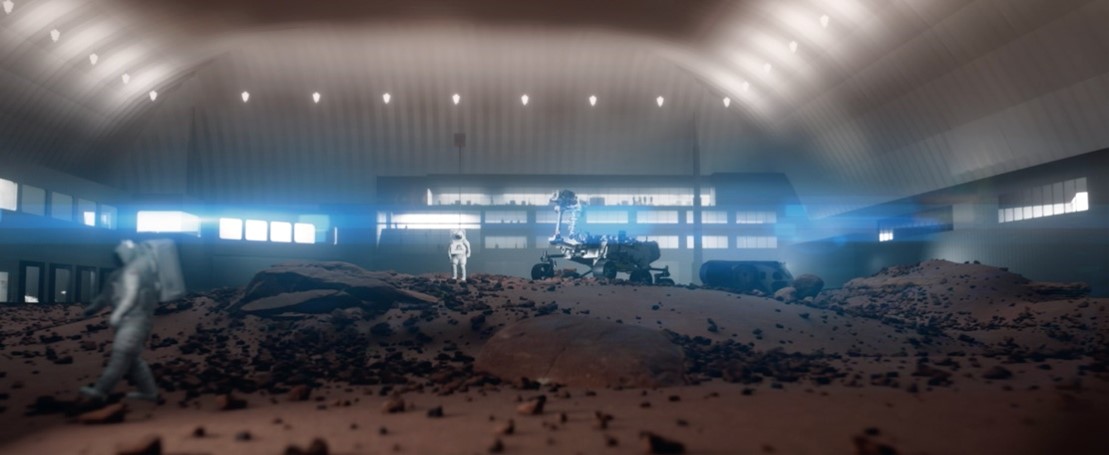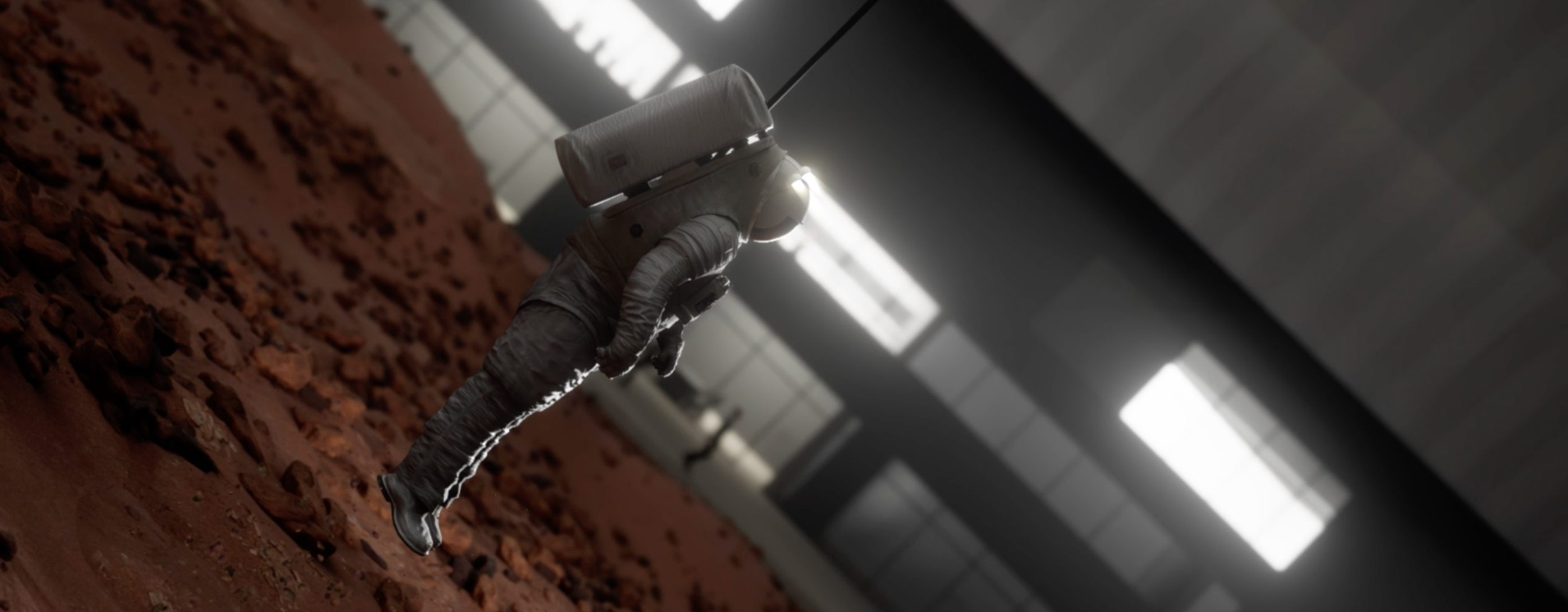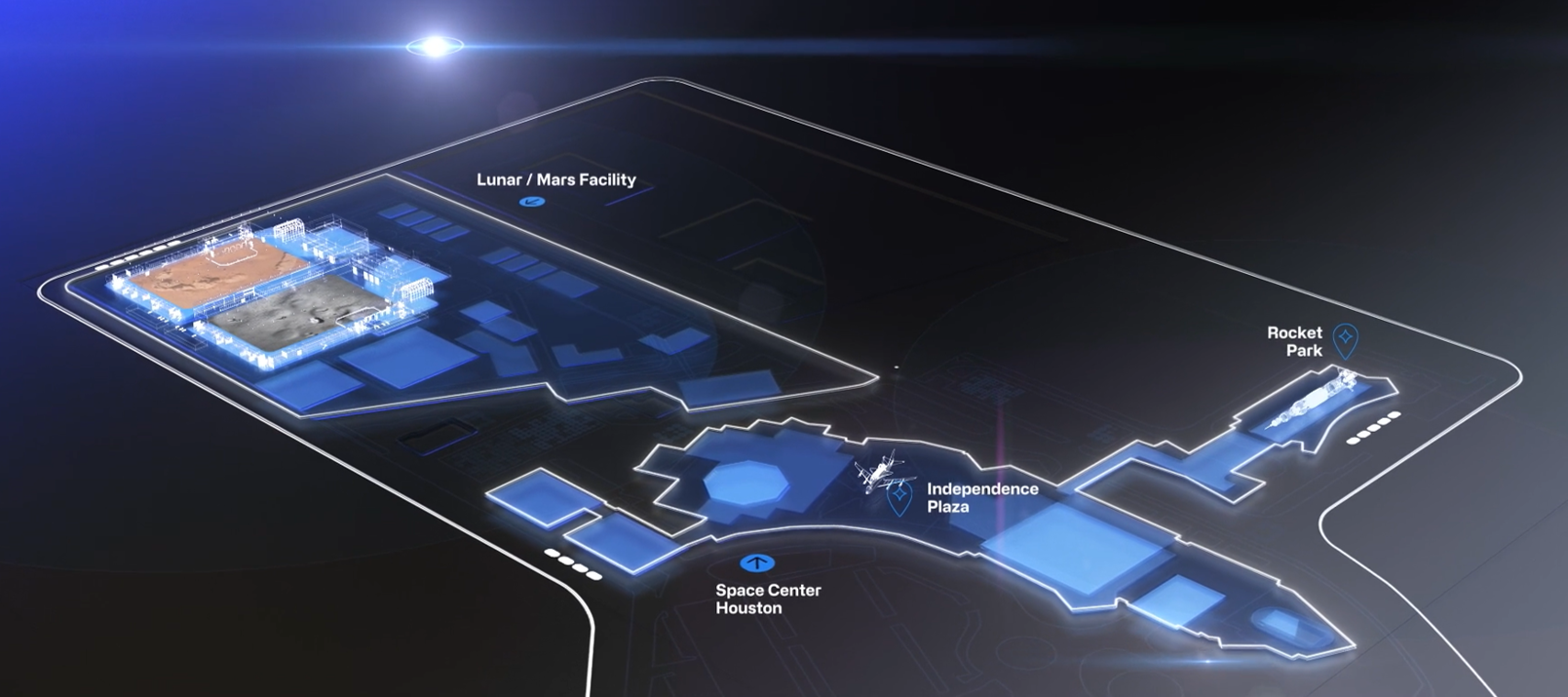Space Center Houston Reimagines Itself with a Bold New Vision
Announces Plan to Transform 100-Acre Site, Including a Lunar Mars Immersive Experience and Learning Center

The Lunar Mars facility will include two enclosed simulated cosmic terrains for astronaut training on the Moon and Mars. Photo courtesy of Space Center Houston.
The nonprofit Space Center Houston, NASA Johnson Space Center’s official visitor center, is advancing a Facilities Master Plan to support the growing need for space exploration learning and training in two massive structures that will also give the public a front row seat into the development of robotics, rovers, lunar landers, and reduced-gravity systems. On Oct. 18, the visitor center offered a glimpse of the facility that will include two enclosed simulated cosmic terrains of the Moon and Mars, as well as modular surface labs and STEM learning centers. An elevated exhibit hall over the two surfaces will offer the public immersive experiences to observe astronaut training firsthand while experiencing the future of space exploration as humans return to the Moon and, eventually, on to Mars.
Space Center Houston is responding to the opportunities and challenges in a rapidly evolving space sector, including the need for facilities built for current and future missions, while sharing this excitement with the public and addressing critical gaps in the development of the STEM workforce through its education programs. The Lunar Mars facility will bring together guests, NASA, commercial space partners, colleges, universities, and global space agencies to collaborate on new technologies that are propelling present and future human spaceflight.
For 30 years, Space Center Houston has chronicled the journey of human spaceflight while empowering and inspiring people to pursue careers in science, technology, engineering, and mathematics, or STEM.
“Space is expanding once again, and a new space age is upon us,” said William T. Harris, president and CEO, Space Center Houston. “With new ambitions, new players, and new challenges, we will shift our focus from being a curator of past achievements to also facilitating new feats in space.”
Today the center also unveiled a new brand identity driven by its shared purpose to bring people and space closer together. The new identity represents the evolution of Space Center Houston and its future. Since opening its doors on Oct. 16, 1992, Space Center Houston has welcomed more than 24 million guests.
The Facilities Master Plan is the culmination of years of planning and prototyping to inform how the center will meet the needs of the growing space industry while educating the public through experiences that reveal how science and humanity power space exploration.
The Lunar Mars facility will include simulated surfaces of the Moon and Mars, as well as modular surface labs to design and test instruments and techniques for surface exploration, support testing lunar and Martian rovers on a one-mile indoor track and allow engineers and astronauts to practice working in reduced gravity and conduct emergency procedures. The immersive guest experience will provide Space Center Houston guests access to observe in-person astronaut training while learning about the missions, challenges, and benefits of the space industry.
“Imagine having a front-row seat on the surface of the Moon or Mars right here in Houston,” said Harris. “Space Center Houston is recognized for providing meaningful, moving experiences about people and the courage, innovation, and teamwork they use to expand the boundaries of what’s possible. We inspire our guests to connect with the significance of space exploration, to pursue their own path in space, or simply follow along as incredible feats of human spaceflight continue to bring joy and wonder to the world.”
The global space industry is projected to grow nearly five times its current size by 2050. There are now 77 government space agencies around the world. Texas is uniquely positioned in this rapidly growing economy, with 17 of the world’s top 20 aerospace manufacturers having a presence in the state.
The evolution of Space Center Houston is a phased approach that lays out a conceptual vision for the guest journey and experiences of the future campus. Further details about the organization’s plans will be announced in 2023. To support the vision and expansion of these programs and facilities, the nonprofit will engage public and corporate support in addition to private philanthropy.
The expansion will enable the center to grow its immersive programs that inspire guests of all ages to realize the significance of space exploration. Currently, through programs like Space Center Houston’s Space Center University and the Human Performance Accelerator Lab, students and adults train like an astronaut or engineer in the same facility as NASA astronauts.
Space Center Houston will announce future milestones about its new journey on future.spacecenter.org.
Join the conversation on social media using the hashtag #spacecenterhou.

Astronauts will train in reduced gravity and conduct emergency procedures. Photo courtesy of Space Center Houston.

The campus includes a Lunar Mars facility with two simulated terrains of the Moon and Mars, modular surface labs, and a STEM learning center. Photo courtesy of Space Center Houston.

Space Center Houston guests will see astronaut training first-hand from an elevated exhibit hall inside the Lunar Mars facility. Photo courtesy of Space Center Houston.







